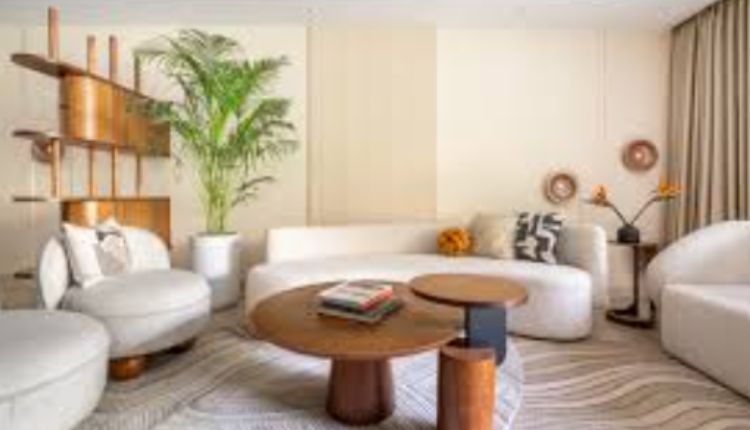The best-designed homes are not just well-built, they’re deeply personal. They speak to the rhythm of the people who live in them, effortlessly blending form with function, style with substance. In the world of high-end residential design, beauty isn’t something that happens at the end of the build, it’s embedded in every decision, from the slope of a ceiling to the softness of a window shade. Creating this kind of harmony requires a seamless relationship between architecture and interior design. One of the most overlooked elements in this collaboration? Modern window covering options which can play a defining role in how light, space, and privacy are experienced inside a home.
Architecture is Just the Beginning
A home’s architectural foundation is its skeleton, the structural form that dictates flow, shape, and space. But once the walls go up and the windows are framed, the conversation must evolve into how those spaces feel and function on a day-to-day basis. And that’s where interior elements begin to take the lead.
The placement of windows, the size of a room, or the orientation of a home to natural light all determine what kinds of interior solutions make sense. That means the architect’s work is only part of the story, an essential part, but one that requires input from the interior design side to be fully realized.
For example, wide open-plan living rooms with floor-to-ceiling glass need both architectural integrity and elegant solutions for light control. Heavy drapes may overpower the room’s lines, while poorly selected blinds can cheapen the entire look. Getting this balance right means considering soft finishes like window coverings as part of the design conversation from the start.
It’s Not Just About the Walls, It’s What Lives Between Them
Interior design isn’t just a decorative layer added after construction is complete. In well-crafted homes, it’s part of the dialogue from the blueprint phase. This is particularly true when considering things like window treatments, which directly interact with a home’s natural and artificial lighting, acoustic properties, and energy efficiency.
That’s why more designers and builders are coordinating earlier than ever, ensuring that architectural intentions align with practical lifestyle needs. A grand staircase bathed in natural light? It might need UV-filtering shades to preserve the floors and artwork. A bedroom with panoramic windows? It needs privacy, insulation, and ambiance, all of which can be achieved with the right fabric and mechanism choices.
The site http://jdbeckerhomes.com/ is a clear example of this architectural vision in action. It showcases how custom homes can be thoughtfully designed to embrace modern aesthetics, while leaving space for equally modern interior elements to enhance daily life. The homes aren’t just visually stunning, they’re built with the foresight to accommodate the practical and visual needs of the homeowners inside.
Soft Materials, Hard Decisions
Choosing the right window coverings isn’t always straightforward. There’s an emotional and tactile element to it, how a fabric feels in the hand, how it falls, how it glows in filtered light. But these soft materials make hard impacts on how a space is perceived and used.
Take a minimalist modern home, for instance. Its clean lines and expansive glazing call for window treatments that are subtle but effective. Roller shades or motorized blinds in neutral palettes might maintain the streamlined aesthetic. In contrast, a transitional home with layered textures and warm tones may call for Roman shades or custom drapery to create intimacy and softness.
These decisions influence everything, from how large a room feels to how warm or cool it stays throughout the day. They’re also deeply tied to how architecture functions. A well-placed skylight, for example, can become a source of glare or heat if not paired with an operable shade system. And a cozy reading nook can go from inviting to unusable if the afternoon sun pours in without filtration.
Collaborate or Compromise
In the most successful home builds, there’s no tug-of-war between form and function. Builders, architects, and designers are on the same team, each contributing their lens to a shared vision. When this synergy doesn’t happen, the results can be disappointing: oddly placed outlets, shades that clash with trim work, or worse, homes that feel technically complete but emotionally disconnected.
Bringing in window treatment professionals early can prevent these missteps. It ensures that mounting options are accounted for, automation systems are integrated seamlessly, and aesthetics are tailored to complement architectural features, not fight them. This kind of integration doesn’t just avoid compromise, it creates cohesion.
It also allows for future-proofing. With smart home technologies on the rise, today’s window coverings need to be compatible with tomorrow’s systems. That means coordination between tech teams, interior designers, and builders, a task that’s far easier when the foundation for collaboration is built from day one.
Living in a Space That’s Fully You
Ultimately, what makes a house feel like a home isn’t just the floor plan or the roofline; it’s the comfort, warmth, and personality that lives inside it. And those qualities emerge from the finishing touches: the light that filters through sheer linen drapes in the morning, the gentle lowering of motorized shades as evening falls, the way each room responds to your daily rhythms.
These moments aren’t accidental. They’re the result of thoughtful planning, detailed craftsmanship, and the belief that every element, structural or soft, has a role to play in the way we live. When custom architecture and elegant interiors are treated as partners rather than separate phases, the result is more than just beautiful. It’s personal, livable, and enduring.
The harmony between walls and what fills them isn’t a luxury, it’s the foundation of custom living. And in that harmony, a house becomes more than a structure. It becomes your story, lived out every day, in comfort and style.






